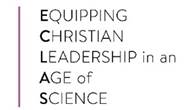Making Miracles
How does science help people agree whether a miracle has taken place?

In the Gospel of Luke (17:14), Jesus heals ten men, and sends them to the priests to confirm that they have been ‘cleansed’ of their sickness.
But how would we set about weighing the claim of an extraordinary healing, or some other miracle, in the present day? The answer to this question is a story that reveals a surprising similarity between science and religion, and showcases the Catholic Church’s method for using science in the service of faith.
Some people simply deny that miracles are possible. This story doesn’t try to argue with their opinion, but starts with those – perhaps the world’s majority – who do.
In the early eighteenth century, the future Pope Benedict XIV developed a detailed list of criteria to make sure that ordinary explanations were excluded before a healing was deemed miraculous. It was a very strict set of guidelines, ruling out gradual recoveries, or healings that were accompanied by other symptoms (such as sweating, or bleeding) that might suggest spontaneous natural remission.
Benedict also stressed the importance of bringing in medical doctors to apply the guidelines according to their expertise. He even invented the role of the ‘devil’s advocate’, whose job it was to do everything he could to argue why a healing might be explicable in ordinary ways.
Benedict’s thought reflected recent and profound changes in science and medicine.
Towards the end of the seventeenth century, British experimenters had established new standards for what was believable in science. Rather than debating great theories about natural philosophy, they agreed to limit their knowledge to what they could observe.
Science was now defined as what could demonstrated by experiment: anything else was philosophy. The validity of science depended upon the word of gentlemen (never commoners, and rarely ladies) who were actually present in the room when the experiment was conducted.
Thus, scientific truth came to depend upon reliable witnessing. And since not everyone could be in the room to witness an experiment at the same time, men of science began to develop written methods – journals – that would extend reliability into second-hand reports.
Science and faith, then, both rely upon processes of human testimony.
St Thomas Aquinas. An altarpiece in Ascoli Piceno, Italy, by Carlo Crivelli (15th century) | WikiCommons
St Thomas Aquinas. An altarpiece in Ascoli Piceno, Italy, by Carlo Crivelli (15th century) | WikiCommons
Postcard of Pope St. Pius X, taken in 1907 by the Neue Photographische Gesellschaft of Steglitz in Berlin | Public Domain/Flickr
Postcard of Pope St. Pius X, taken in 1907 by the Neue Photographische Gesellschaft of Steglitz in Berlin | Public Domain/Flickr


In the late nineteenth and early twentieth centuries, Roman Catholic leaders further developed Benedict XIV’s scientific methods. They needed to deal with the many apparently miraculous healings that had followed the appearance of the Blessed Virgin Mary to a teenage girl in Lourdes, France.
The task was all the more urgent in the light of the modernist movement within the Church. The movement’s scholars claimed that miracles were a metaphorical feature of scripture, and not to be expected in real life. In the face of this challenge, Pope Pius X realised that science, appropriately applied, could clear space for the Church to affirm miraculous events.
Two independent teams of scientific experts – still in place today – were appointed to evaluate the claims of Lourdes pilgrims. First, a local bureau of doctors assesses the case, passing it on to an international team of medical experts. Both panels must testify that current medical knowledge cannot account for the healing.
However, all that medical experts can do is to acknowledge the limits of scientific understanding: the case now passes to theologians, who must decide whether it points towards divine action. This stage is crucial because plenty of inexplicable things happen in life, but they are only counted miraculous if they are a sign of God’s purposes.
Compared to other kinds of alleged miracles, healings are simple to evaluate. It’s not because they are somehow scientifically ‘easier’, but because they are theologically more straightforward. God’s intention for human wholeness is a conventional interpretation of the Gospel.


Around the world, Pentecostal and other Christians share an enthusiastic expectation of God’s healing in response to prayer. They now have over a century of informal methods to evaluate such testimony:
- Is fraud or gullibility at work?
- Might the results be psychosomatic?
- How does this relate to professional medical assessment? Does it resonate theologically with Jesus’ healings in the Bible?
In Miracles Today, the New Testament professor Craig Keener carefully applies these questions to the wealth of contemporary testimony of the miraculous from many parts of the global Church.
Like the Lourdes panel, which affirmed its latest healing in 2018, Keener concludes that miraculous testimonies are often authentic.
Whether in the formalised system of the Roman Catholic Church, or via more informal methods, science can lend its methods of witnessing to serve faith’s recognition of wonder.
Mary as a patron saint. Origin: Antwerp. Date: 1611 | Rijksmuseum
Mary as a patron saint. Origin: Antwerp. Date: 1611 | Rijksmuseum
Questions for discussion
- Who do you trust to bring you news about science, and why?
- Who do you trust to bring you news about God’s work in the world, and why?
- What role does testimony, of whatever kind, play in your faith community? What role would you like to see for it?
Further reading
Bernard François, Esther M. Sternberg, Elizabeth Fee, The Lourdes Medical Cures Revisited, Journal of the History of Medicine and Allied Sciences, Volume 69, Issue 1, January 2014, Pages 135–162
Craig Keener, Miracles Today: The Supernatural Work of God in the Modern World (Baker Academic, 2021)
To Download a free text version of this article to use with your congregation click below






